Orange Collective
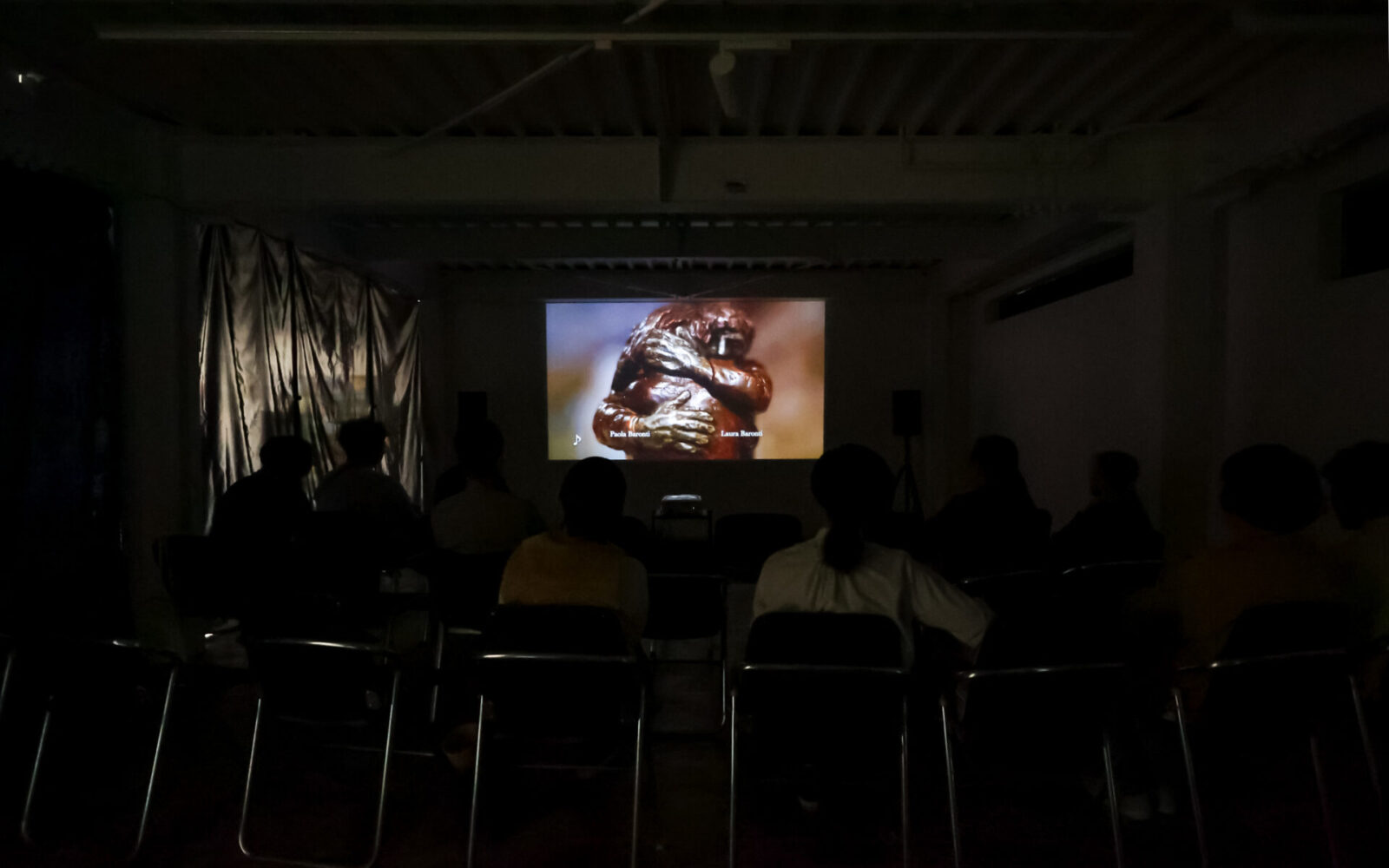
Kinan Art Week 2023 ‘Mikankaku’ screening review
” The Japanese language has two verbs that describe contact: ‘touch’ and ‘feel’. In Japanese, there are two verbs that describe contact: ‘touch’ and ‘feel’.
(…) ‘Touch’ is a one-way contact. Touch the wall. Touching an apple. It is usually used for contact with an object, where there is no emotional exchange between the person touching and the person being touched.
On the other hand, “feel” is bidirectional. It is usually used for contact with a human being, and
the one who is touching will fine-tune the way he or she touches the other person by estimating how open the other person’s heart is.”
Asa Ito, aesthete (from the film <Le mani toccano il mondo> pamphlet).
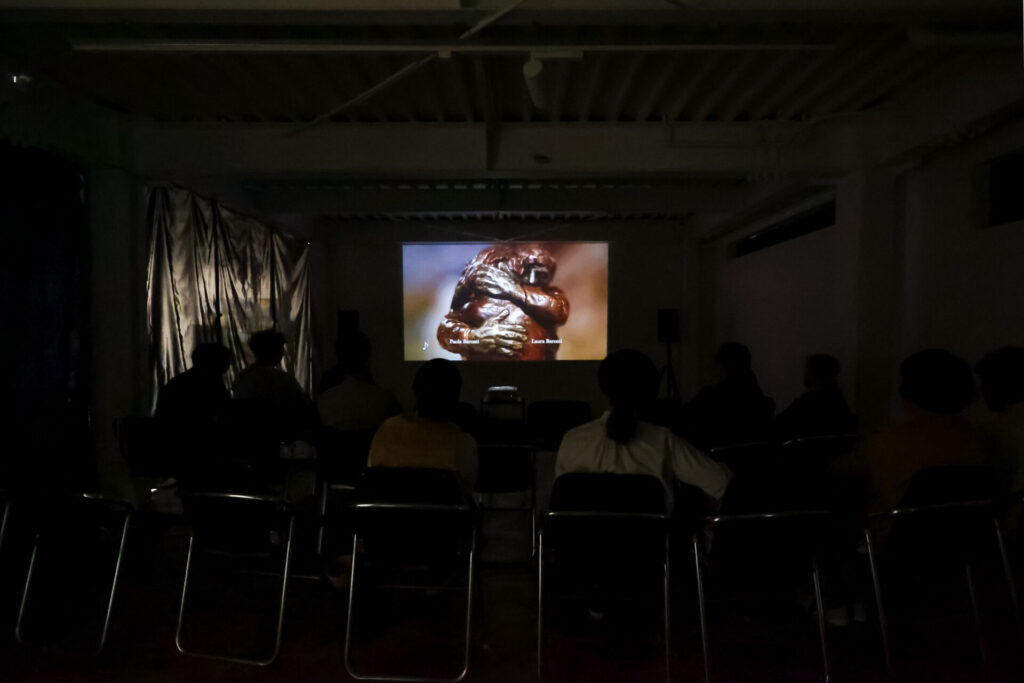
In Kiyose City, an area of Tokyo that is not well known even among Tokyo residents and still retains a precious Showa-era atmosphere, I was working as a freelance support worker to help people with visual and intellectual disabilities go out, while also organising independent film screenings several times a year as a community activity.
Since August 2011, when the film <Hula Girls> was conducted with audio guidance, seven or eight screenings have been held in Tokyo, followed by another seven or eight in Tanabe City,
Wakayama Prefecture, in 2015, after moving to Tanabe City, Wakayama Prefecture, where a voluntary group called Futakawa Cho-Gakkou was mixed in to utilise an abandoned school in the area, using a former music room.
Collectively, they have organised or assisted in the screening of around 50 films (mainly documentaries).
‘So you like films. How many films do you watch a year?” I am often asked. ‘No, I don’t know…’ I always feel uncomfortable.
In fact, compared to people who really ‘film lover’, I am too embarrassed to say that I am a ‘film lover’, because I have only seen so many films. Perhaps ‘organising screenings’ and ‘liking films & watching lots of films’ are not so directly connected.
There are plenty of people who like films, and if you think about it, the streets should be full of screenings. But this is not the case. The two are not as correlated as one might think.
More specifically, being a ‘film buff’ does not mean that you watch a lot of films. There is also the physical problem of rural dwellers not being able to see a film nearby, even if they wanted to.
By the way, when a screening is held, a unique magnetic field appears in the venue. Depending on the film, the number of people and the number of people who have gathered there, it is different every time, and it changes again when the film is finished.
That’s interesting.
And through films, we can talk and think about things that we would not dare to actively talk about in everyday life, such as war, politics, education, the environment, philosophy, art, human rights, gender… and so on, using films as an opportunity.
There are many high-quality films on such a variety of subjects, and it is documentary films that interest me the most.
(I am sure that I (who am not good at speaking or writing and basically live in the mountains)
would like to ‘touch’ society through the medium of screenings.
I don’t just want to do screenings, I want there to be interactivity there. I have a feeling that this is the case.
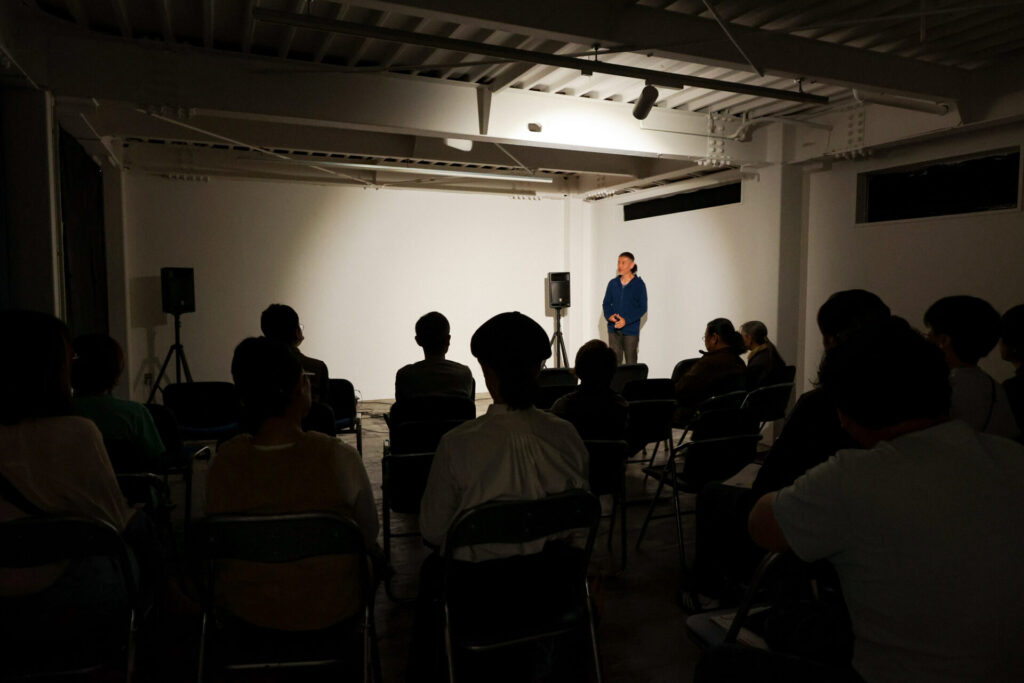
The Kinan Art Week participated in 2022 with the screening of the film <Tower of the Sun>, followed by two film screenings in 2023.
The first film is Koko Okano’s <Le mani toccano il mondo> (2022/Japan).
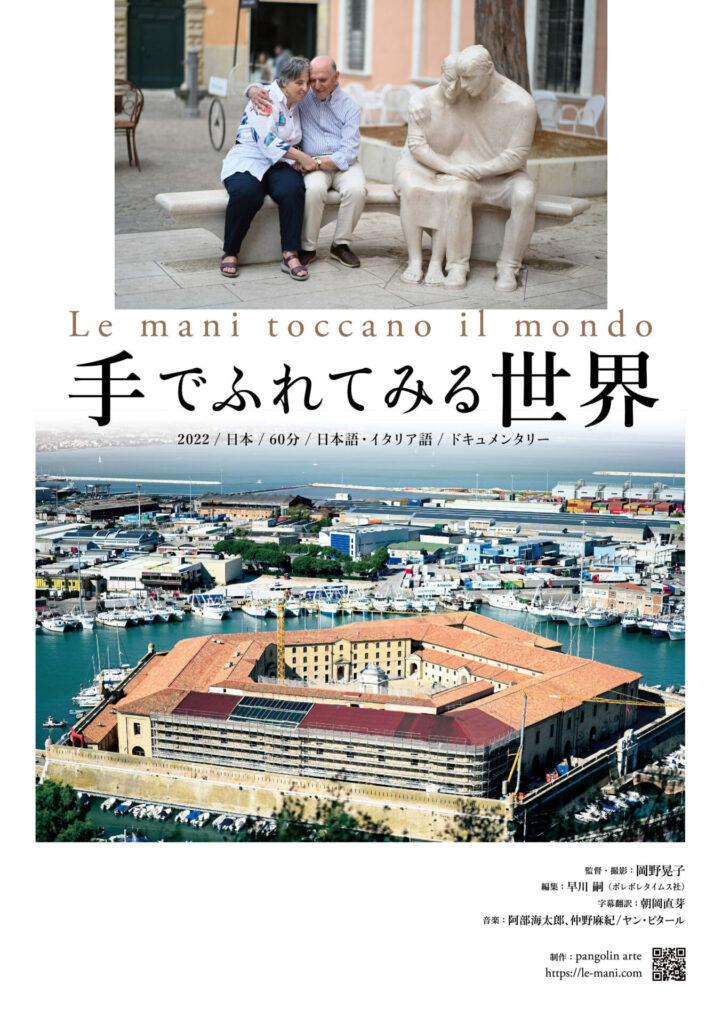
This film, which I became aware of through Satoshi Hirose, an artist living in Italy during the Kinan Art Week, is a very careful film by Okano about a blind couple, Aldo Grassini and Daniela Bottegoni, who are the owners of the Tactile Museum Omero in the Marche region of Italy.
In their travels around the world, they found that they could not fully enjoy the artworks in museums because they were not allowed to “touch” or “feel” them, so they took the opportunity to create their own museum where anyone can touch the artworks.
The works are mainly sculptures, but visitors enjoy learning and experiencing them in their own way.
By “feeling”, we all feel that we are sensing something important that cannot be understood or conveyed by just looking, and at the same time we realise how art works have been created on the premise that they can be seen or seen.
I don’t know whether it is the director Okano’s appearance or the Italian character, but all the people in the film seem to cherish the present moment and enjoy their lives, despite their disabilities.
The second film, which I really wanted to screen together with <Le mani toccano il mondo>, was Daisuke Miyoshi, Ario Kawauchi, Director: <Blind Mr, Shiratori Goes to See Art> (2022/Japan).
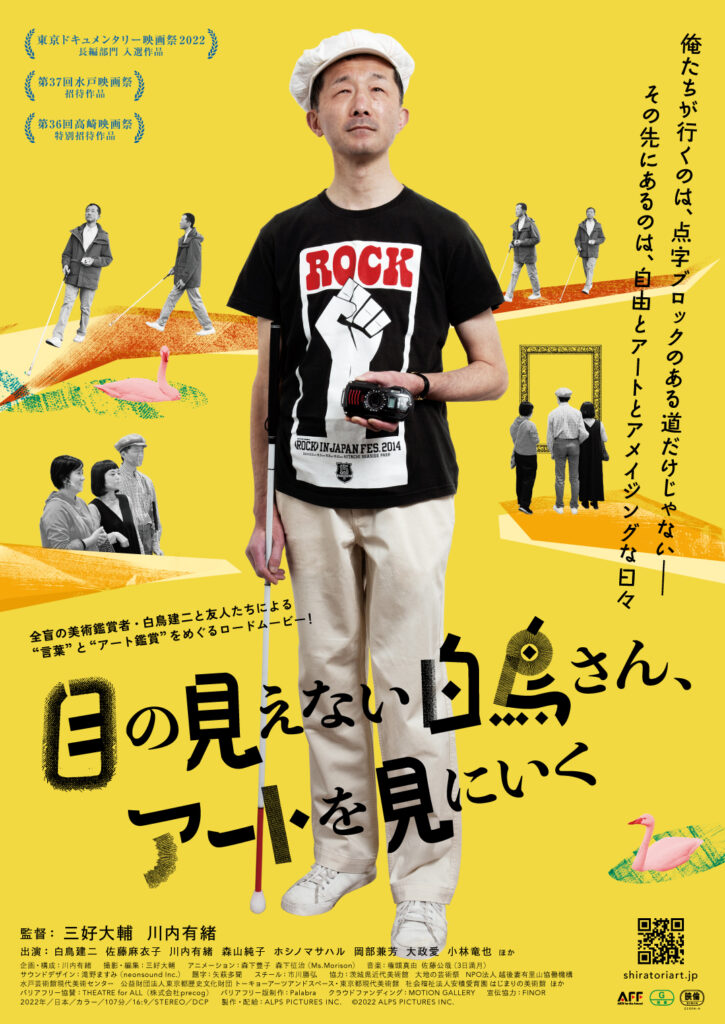
The content of the film is exactly as the title suggests, but the way in which Mr, Shiratori, who is blind, appreciates art is really interesting. When visiting a museum, she always goes with someone or is accompanied by a museum staff member who explains the artworks to her on the spot.
Based on the colours and shapes, how they look and feel to the person who is commenting on them, and sometimes by asking questions, Shiratori constructs an image of the work in her mind.
He says that it is more fun to do something that is more abstract than something where you can clearly see what is depicted. If you do this with more than one person, they will all say (feel) differently, so the image can be three-dimensional, or conversely, it can be completely unclear…
The audience is exposed to the artwork by ear through conversation, without using the sense of touch. This is a wonderful way of viewing artworks, where you can touch not only the artworks but also all the people who are present.
This documentary follows Mr, Shiratori, who has developed such a method of appreciation.
Both films are shown in a universal version, with Japanese subtitles and audio guidance as well as video.
The audio guide is designed for blind viewers to provide audio commentary on who is doing what in what place and scene in the film, etc. The guide is created by listening to the opinions of blind people while searching for the right words for each scene so that it does not cover the dialogue in the film.
In just a few seconds between conversations, the entire film is finished, sometimes with a director, to find out what is to be conveyed in this scene. In fact, it is a craftsmanship that is impossible with AI, and I wish it were better known.
In addition to the screenings, the film was also the subject of a talk event by Okano and Satoshi Hirose, as well as the workshop ‘ Hands-on Art Appreciation ‘, which was held on a separate date.
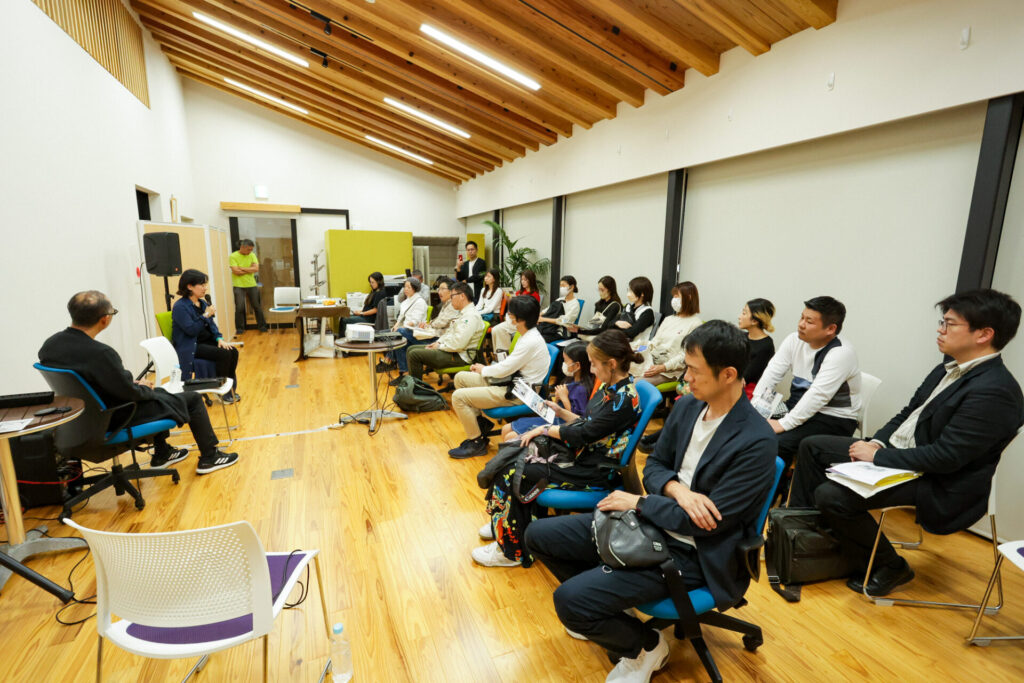
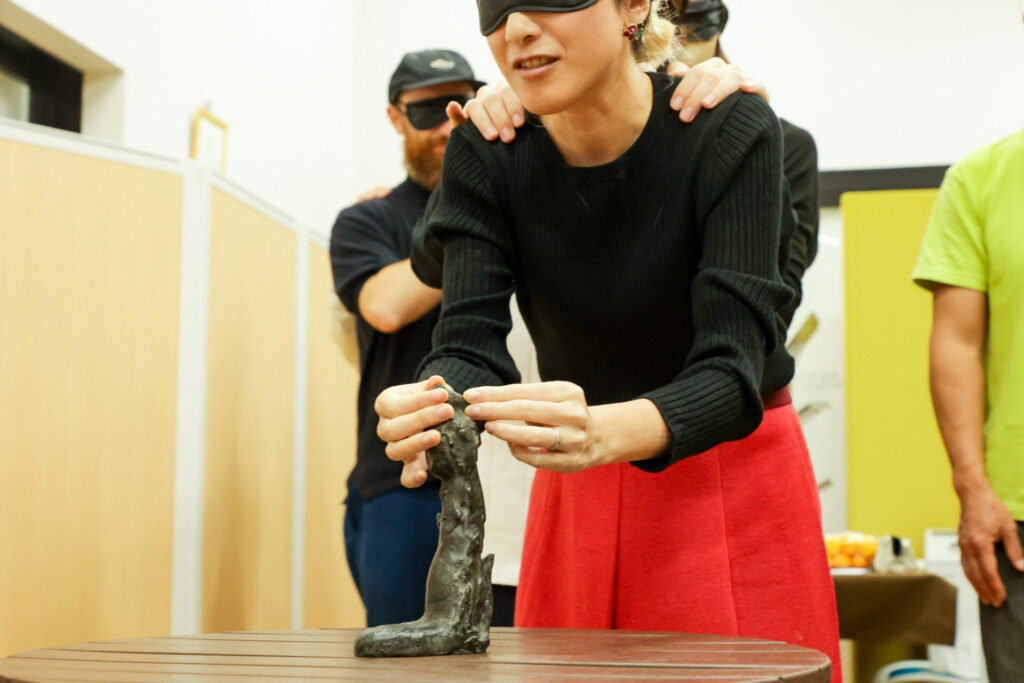
When there is only a film screening, the magnetic field seems to unwind as the film finishes, but when there are talks and workshops afterwards, the magnetic field changes in a different way.

This was fostered in the talks immediately after the screenings, and the workshops created a comfortable atmosphere that was bouncy, or rather, hard to put into words, but strangely uplifting when you were there.
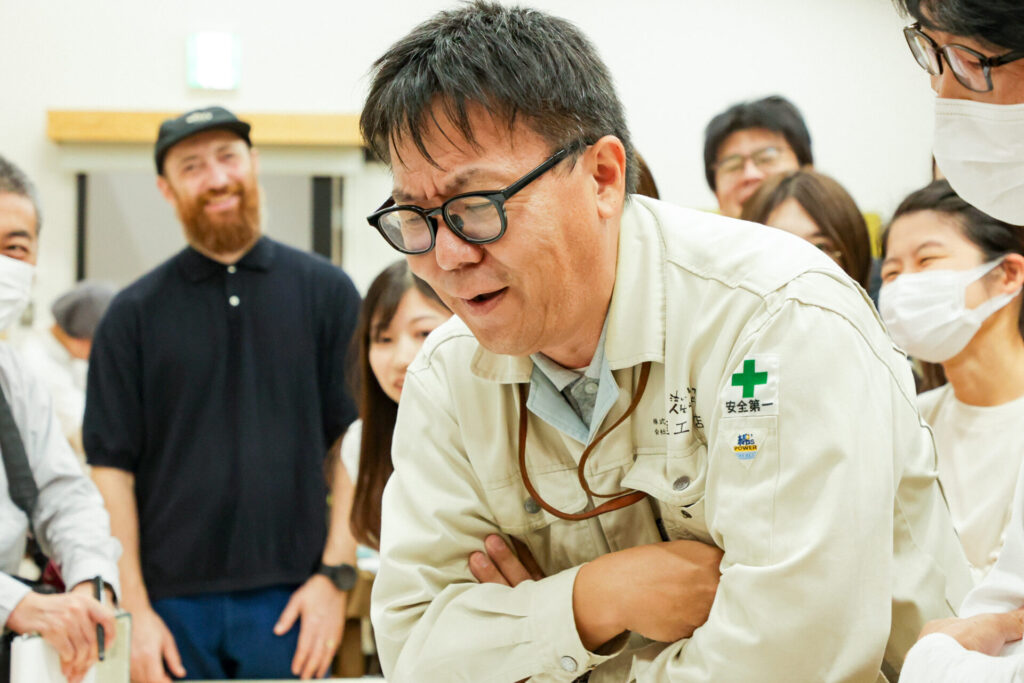
In Western culture, there seems to be a hierarchy in which sight and hearing are at the top, followed by smell, taste and touch, and when considering works of art, including music, there is certainly a bias towards things that are appreciated with the eyes and ears.
I am not sure if it was a deliberate decision, but I think the Kinan Art Week is a very new and meaningful experiment, focusing on the senses of smell, taste, and touch, with the addition of Kinan’s specialty, mikan (mandarin oranges), and the event is called “Mikankaku”.
As an art event, it may be at the stage of ‘feel’ the Kinan region. We hope it will spread further and take root in the future.
Text by Takamitsu Kawasaki (KINOKUMA-ZA)
All Photos by Manabu Shimoda (coamu creative)
